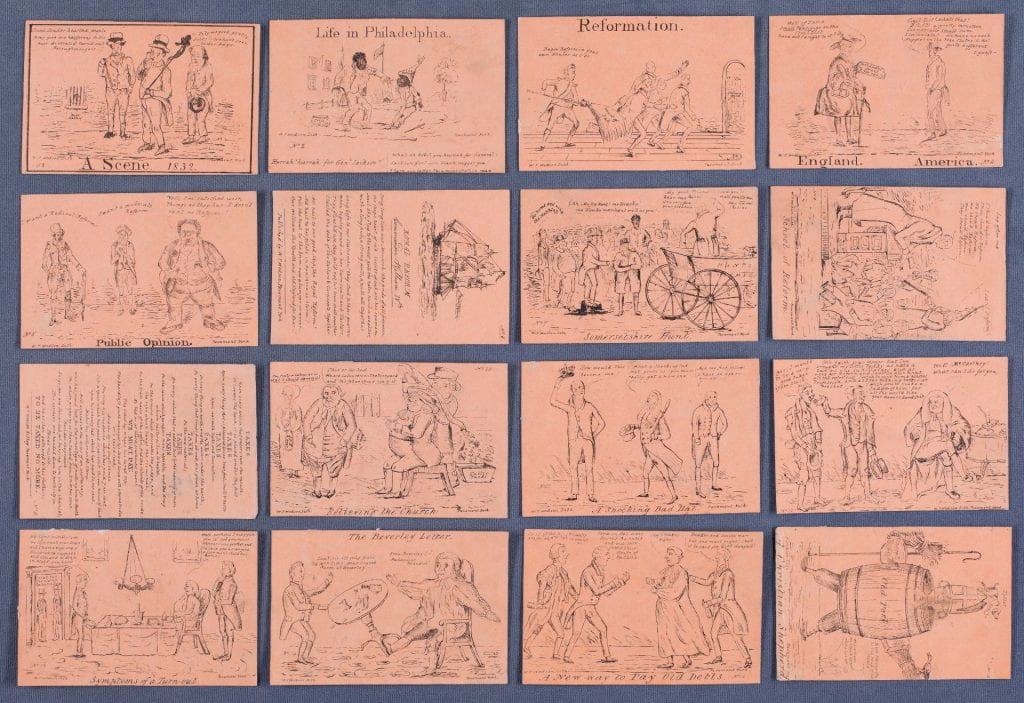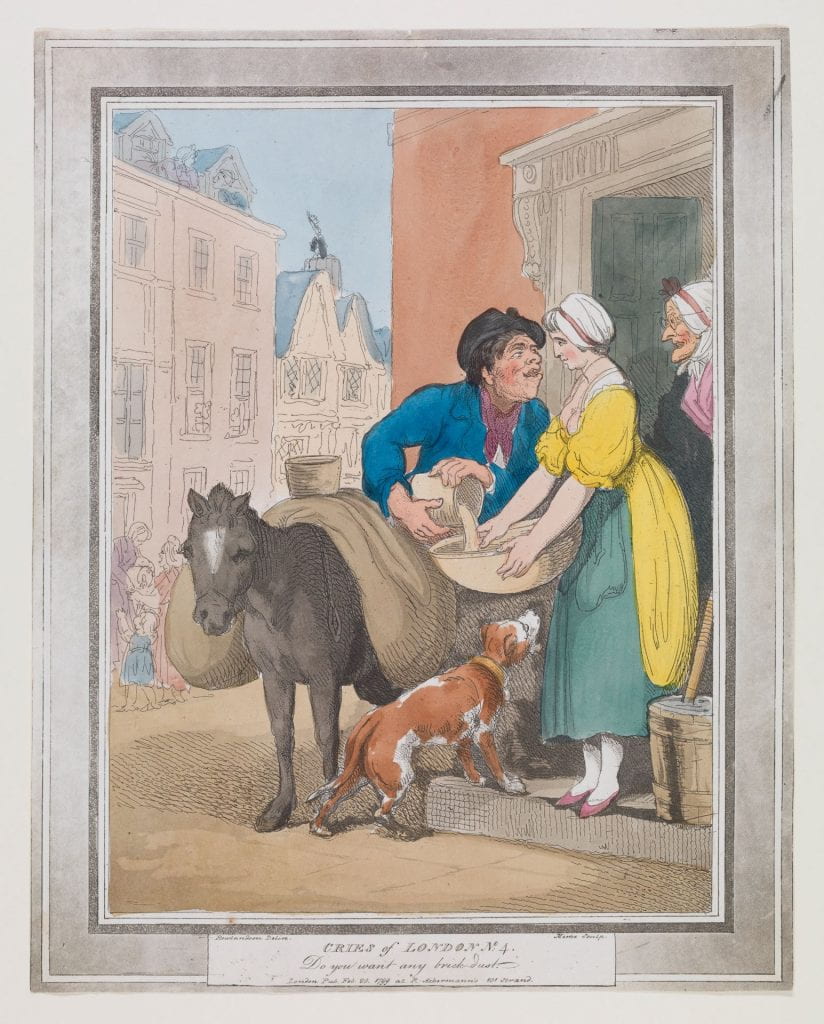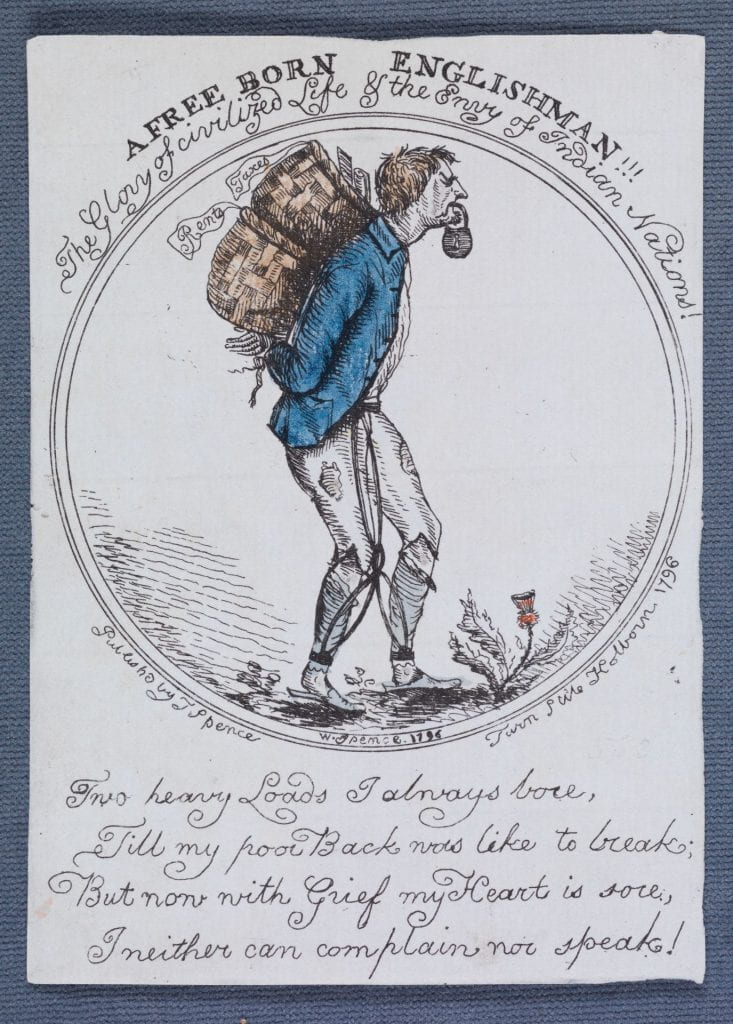
“Lady Hertford, seated regally on a small sofa, cuts locks from the head of the Regent who reclines against her knees, asleep. The locks already cut are on the ground inscribed respectively ‘Sheridan’, ‘Norfolk’, ‘Moira’, ‘Holland’, ‘Erskine’. She is about to shear off one inscribed ‘Grenville’; the last, ‘Grey’, is still on his head. The Prince, who is conventionally handsome, and wears uniform, holds a paper signed ‘[Gren]ville / Grey’; his garter, inscribed ‘Honi so . . .’, is loose, and his left hand hides the star on his breast. Lord Yarmouth (right) stands holding a guttering candle; he points to the uncut lock, saying, “Don’t forget that lock laying [on] the shoulder its Grey dy’ye see!” In his pocket is a pamphlet: ‘Art of Milling’ [see British Museum Satires No. 11842]. To leave no doubt as to his identity, a basket of fish is beside him inscribed ‘[Y]armouth Herrings’. Lady Hertford is heavily handsome; a small crown, which might pass as a tiara decorates her head; one foot rests regally on a footstool. A pillar and drapery behind her suggest regal state. On the sofa beside her is a rolled document headed ‘Road to Hertford from Pall Mall’. On the ground (left) are empty wine-bottles; on a book by the Prince’s feet, ‘Economy of Human Life’, lies a broken bottle from which wine pours. Behind (left) stands Perceval in his Chancellor of the Exchequer’s gown, watching from behind a curtain which he holds aside; Castlereagh stands behind him, saying, “By Jasus, but she’s as pretty a Barber as ever I clap’t my eyes upon.” Perceval answers: “Hush! Hush! you’l wake him before they are all cut.”.”–British Museum online catalogue.
- Printmaker: Williams, Charles, active 1797-1830, printmaker.
- Title: Delilah depriveing Sampson of those locks in which consisted his strength [graphic].
- Publication: [London] : Pubd. Feby. 1812 by Walker and Knight, No. 7 Cornhill, [February 1812]
812.02.00.03+
Acquired September 2023









